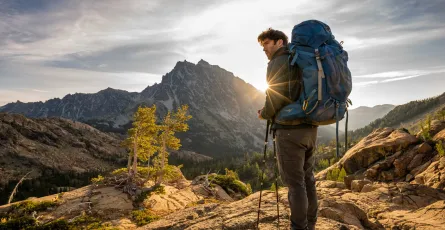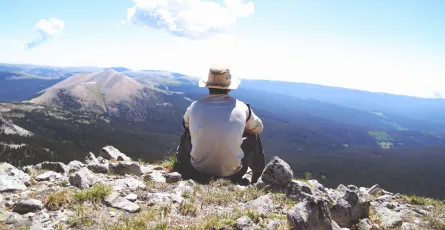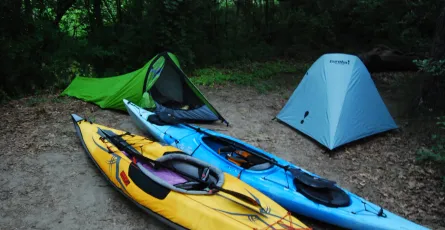
Dealing with Wildlife Encounters
- Trek Stud
- Backpacking
- 21 Aug, 2022
Backpacking Safety: Dealing with Wildlife Encounters
When venturing into the great outdoors on a backpacking adventure, encountering wildlife is an inevitable part of the experience. While these encounters can be awe-inspiring and provide memorable moments, it’s crucial to prioritize safety and respect for the animals and their habitats. In this article, we will explore essential guidelines for backpackers to ensure their safety and minimize potential conflicts when facing wildlife encounters.
Understanding Wildlife Behavior:
Before setting foot on the trail, it’s important to gain a basic understanding of wildlife behavior. Research the region you plan to visit, familiarize yourself with the species that inhabit the area, and learn about their habits. Understanding their behavior can help you anticipate their actions and act accordingly, ensuring both your safety and theirs.
Maintain a Respectful Distance:
When encountering wildlife, it’s essential to maintain a respectful distance. Keep in mind that wild animals are just that—wild. They have their own territories and can be unpredictable. Avoid approaching them too closely, as this can cause stress and potentially lead to aggressive behavior. Admire animals from a distance and use binoculars or a camera with a zoom lens to observe them without intruding on their space.
Practice Noise Discipline:
While backpacking, try to maintain noise discipline in order to avoid startling wildlife. Animals may perceive sudden noises as threats, causing them to react defensively. Keep conversations low and avoid loud music or unnecessary noise. By practicing noise discipline, you can minimize disturbances and increase the chances of peacefully coexisting with wildlife.
Proper Food Storage and Waste Disposal:
Wildlife is often attracted to the smell of food and can become a nuisance or even a danger if they associate humans with a readily available food source. Proper food storage is vital to prevent unwanted animal interactions. Invest in bear canisters or bear-resistant containers to securely store your food and scented items. Avoid leaving any food scraps or trash behind, as it can disrupt natural ecosystems and habituate animals to human presence.
Respect Nesting and Breeding Areas:
Certain wildlife species have nesting or breeding areas that are particularly sensitive. These areas are critical for the survival of the species, and any disturbance can have severe consequences. Research the local wildlife and their breeding seasons, and make sure to avoid those areas during those times. Respect signs and regulations in place to protect these sensitive zones, ensuring the preservation of the ecosystem.
Know How to React:
Despite your best efforts, you may still find yourself in a close encounter with wildlife. In such situations, it’s crucial to know how to react calmly and responsibly. Stay calm, avoid sudden movements, and never approach or corner the animal. Give the animal space to retreat, and slowly back away while keeping an eye on it. If the animal behaves aggressively, make yourself look bigger, make noise, and throw objects away from you to distract it. Remember, it is important to prioritize your safety above all else.
Backpacking allows us to immerse ourselves in the beauty of nature, including encounters with wildlife. By understanding and respecting the behavior of animals, maintaining a respectful distance, practicing noise discipline, and properly managing food and waste, we can ensure our safety and contribute to the conservation of these remarkable creatures. Remember, the goal is to coexist harmoniously with wildlife, appreciating their presence while preserving their natural habitat. Embrace the adventure, be prepared, and enjoy the wonders of the wilderness with responsibility and respect.









